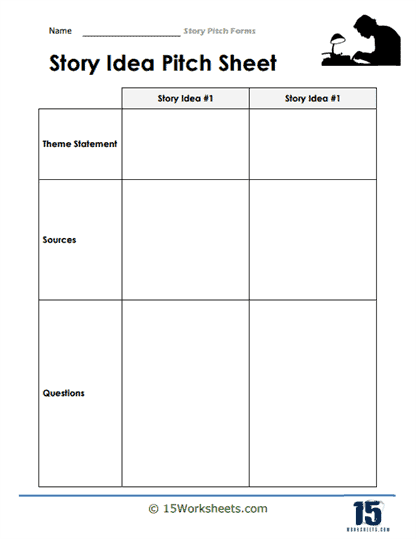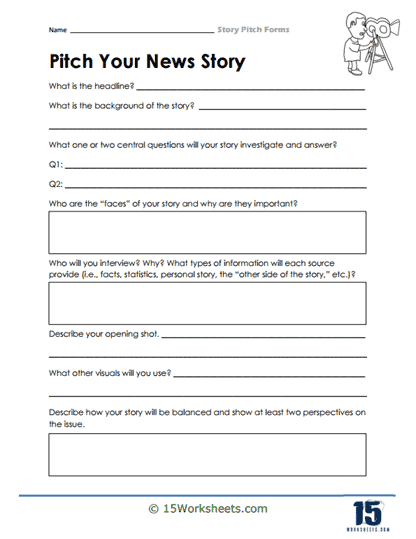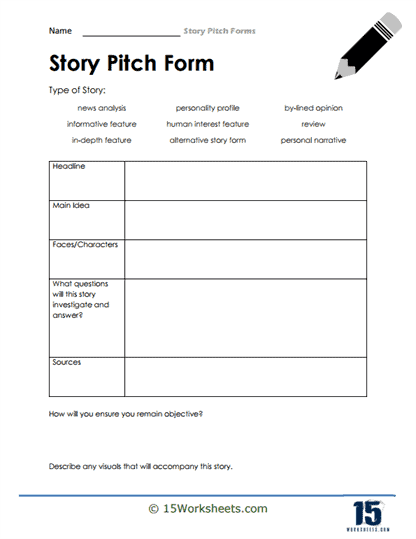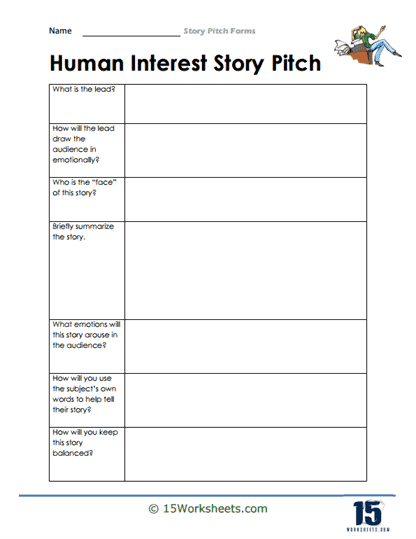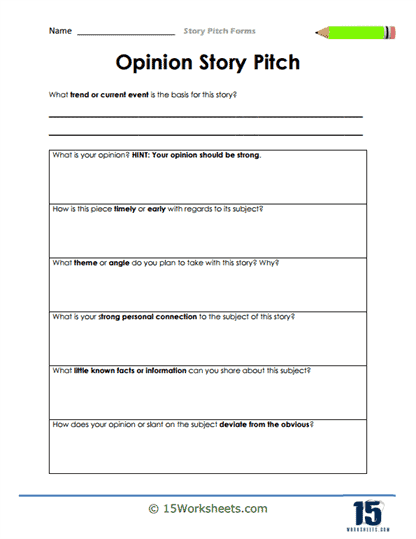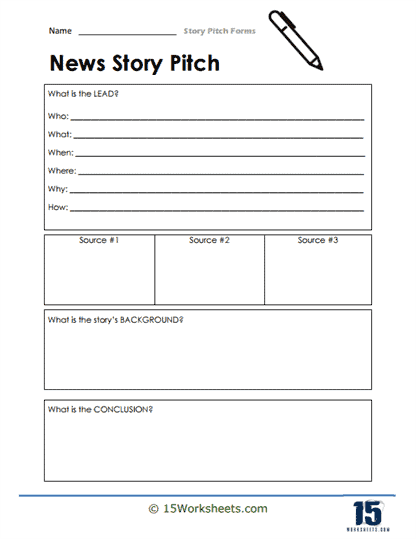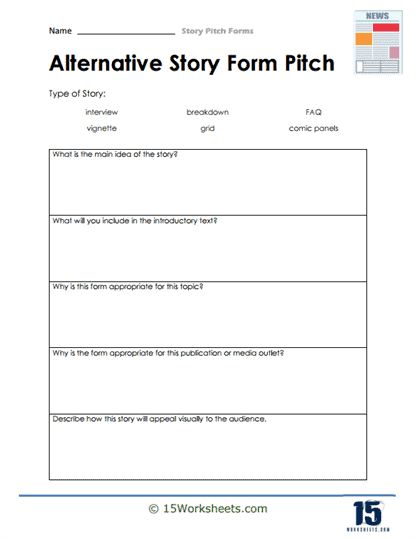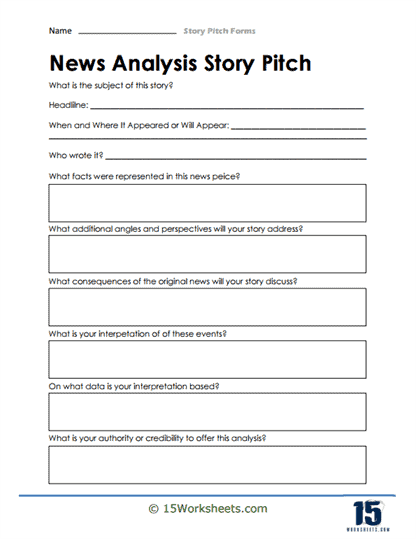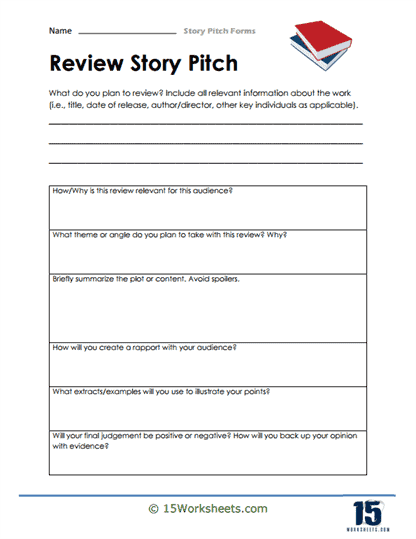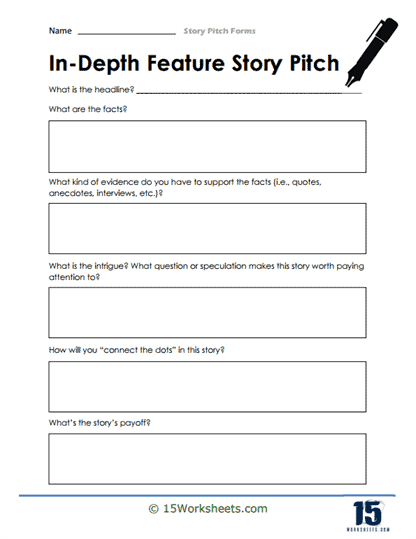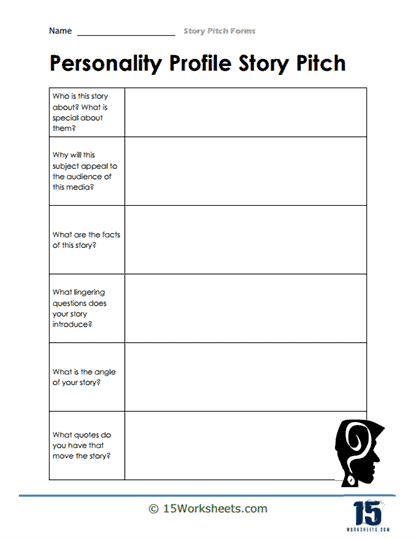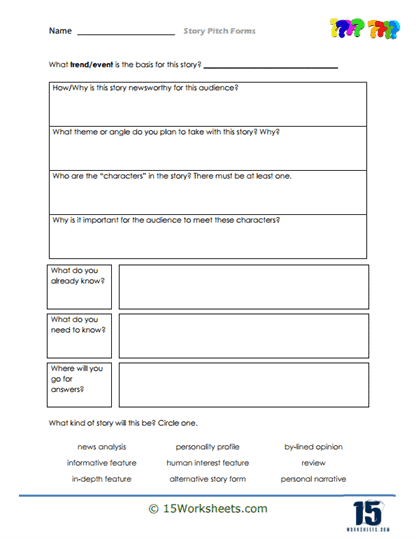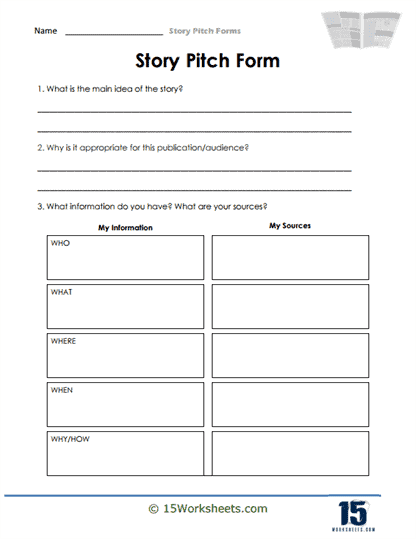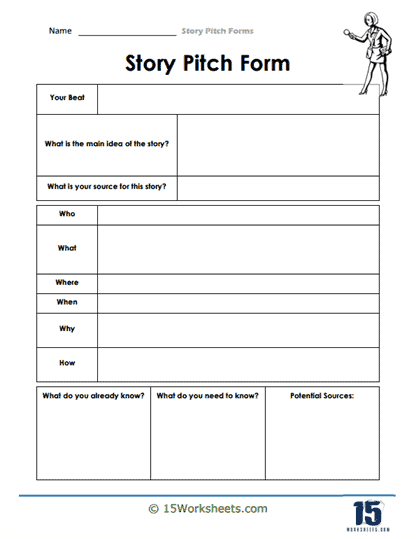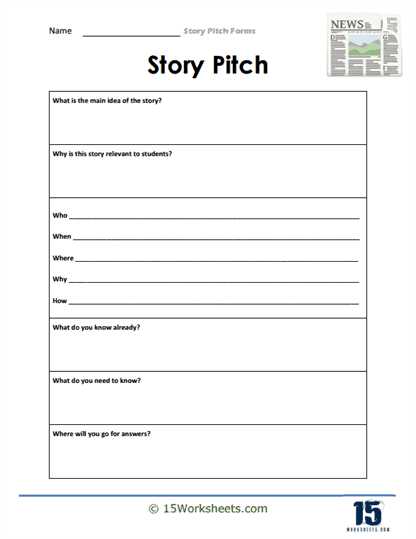Story Pitch Forms Worksheets
All About These 15 Worksheets
This series of 15 worksheets offers students a comprehensive and immersive journey into the art of crafting compelling story pitches. Each worksheet serves as a stepping stone for students to transform their creative ideas into captivating narratives. Through a range of stimulating activities, they are guided through the process of refining their story concepts and elements, and crafting engaging plots with well-researched themes that captivate readers from start to finish.
These varied exercises serve as a blueprint for storytelling success, encouraging students to explore various genres and experiment with different narrative structures. By integrating key storytelling elements such as conflict, setting, theme, and resolution, students learn to construct narratives that resonate with their readers and leave a lasting impact. Through these worksheets, students will:
- Create story pitches for various genres of narratives like news, human interest, opinion, review story, in-depth feature, and personality profile.
- Thoroughly structure their plotlines to ensure a satisfying and engaging reading experience for their audience;
- And explore various forms of conflict and resolution in their stories.
This series does not only hone students’ writing skills but also nurtures critical thinking, problem-solving, and effective communication. Students learn to think analytically about their narrative choices, consider different perspectives, and present their ideas with clarity and confidence.
By engaging with these worksheets, students embark on a transformative journey of self-expression and creativity. They develop a strong foundation in storytelling techniques, enhancing their ability to captivate readers and craft narratives that resonate with a wide audience.
How to Pitch a Captivating Story to Someone
If you are a writer, it is crucial to know how to pitch a captivating story to someone. Before you publish your story and make it available for the world to see, content producers and editors need to know what your story is about.
This means learning to write a compelling pitch that will help you maintain professional relationships with products and other writers in your industry. Moreover, it will also help your work get published.
1. Know What Story You are Selling
It doesn’t matter what industry you work in; if you want to pitch your story, you need to have a solid idea of the story you want to tell your audience.
This means that you must identify important elements of the narrative, such as the star of the story, what other characters in the story do, where the story takes place, why people react the way they do in the story and the sequence of events.
Once you understand the story you want to tell your audience, you can summarize the essential parts and use them in your pitch.
2. Come Up With a Catchy Subject Line for an Email Pitch
Loads of writers send their pitches over email, which is why you need to ensure that you use a clear subject line so that your email stands out. You need to attract the publisher’s attention and inform them what you plan on achieving by sending out the email.
People usually skim their emails which is why your subject line must include the word “pitch” unless there are different guidelines. You can also use the title you have thought of for your piece in the subject line or a catchy phrase that will summarize what your story is about. Whatever you choose to do, do not forget how important the subject line of your email is if you want to get noticed by a publisher.
3. Explain What Makes Your Story Special
Once you have given details about the kind of story you want to tell, you need to explain to the publisher what makes your story so special. Focus on the publisher’s target audience and tell him why your story is meaningful and how their audience would react to it.
You can keep your explanation brief and to the point, but make sure that you tell the publisher that their audience would be impressed by your story. You also need to point out any evidence that your story will contain or the key points of the plot that will help keep readers engaged.
4. Show How Your Story is Relevant
Remember that when pitching a story, you are trying to sell it. When trying to sell it, you must help the publisher make sense of it by showing where it belongs. For example, would you look for chocolate in an aisle of cleaning products? Similarly, readers are more likely to make a beeline for the kind of content they want, along with the categories they are interested in.
Genre, subgenre, and demographic niche are all critical aspects you must include to help guide the publisher on what the readers can expect from your story.
For example, if your story falls in the fantasy category, let the publisher know. You must convince the publisher that your story is perfect for the kind of genre that they produce, and it would be a shame for them to miss out on it.

